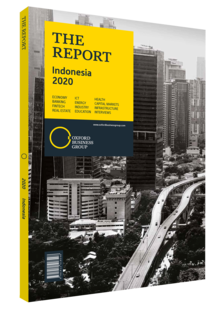What is Indonesia's plan to expand renewables in energy mix?
Indonesia had planned to add 35 GW of new capacity by the time President Joko Widodo, better known as President Jokowi, concluded his first term in 2019. This target has not yet been achieved, and the government has reappraised its outlook for the sector in its Electricity Supply Business Plan (RUPTL) 2019-28. Several elements of the state’s strategy remain the same as the previous plan, RUPTL 2018-27, including the use of coal as the preferred feedstock for generating power, and a desire for foreign investment in generation.
Revised Figures
One notable difference in the updated strategy is the demand projection, which has been revised down from an annual growth rate of 6.86% to 6.42%. However, the rate at which demand has grown in recent years remains below this revised target, averaging 4.6% between 2013 and 2018, according to the Institute for Energy Economics and Financial Analysis (IEEFA), a US-based renewables think tank. RUPTL 2019-28 also features lower targets for the number of transmission and distribution lines and substations – but not additional capacity, which was revised up by from 56.02 GW in the previous plan to 56.4 GW. As of 2018 total installed capacity stood at 64.9 GW.
Regarding the energy mix, the target for 2025 remains largely in line with the previous plan, with a slight increase for coal from 54.4% of the mix to 54.6%. Meanwhile, the contribution of renewables, gas and diesel remained the same at 23%, 22.2% and 0.4%, respectively. Although coal is abundant in Indonesia, long-term supply concerns could emerge due to global financing trends, as many lenders and investors – such as US-based investment management giant BlackRock in early 2020 – have announced their unwillingness to fund new coal projects. Furthermore, falling international coal prices could see some mines struggle with liquidity and fail to meet bond-repayment obligations.
Private Production
While the RUPTL 2019-28 shows that the MEMR aims to almost double generation capacity in the next decade, the state lacks the ability to finance all the necessary projects to reach this target. As such, private investment is being sought from independent power producers (IPPs). The RUPTL 2019-28 envisions 33.6 GW of new capacity coming from IPPs, and 16.2 GW from Perusahaan Listrik Negara (PLN), the sole electricity distributor and producer of most of Indonesia’s power. Rules for IPPs, however, are not the same as those signed elsewhere. Power-purchase agreements (PPAs) may not receive government guarantees, and PLN subsidiaries are typically granted ownership stakes. IPPs are also generally built on a build-operate-transfer model, whereby the ownership of an asset reverts to PLN when a PPA expires. However, not all investors that signed PPAs during President Jokowi’s first term built power plants as planned.
Renewables
Green energy development will be led by the addition of large-scale geothermal and hydropower, according to the RUPTL 2019-28. The government has identified untapped resources of 33 GW of hydropower and 29 GW of geothermal energy that could be turned into electricity at a cost of between $0.02 and $0.04 per KWh, according to Luhut Pandjaitan, coordinating minister for maritime and investment affairs. However, according to Moody’s Investor Service, Indonesia is unlikely to meet its target of 23% renewable electricity by 2025, given that coal-fired power generation looks set to rise to 67.8% by 2022. One area with further potential is solar energy, which has been cost-competitive in other regional markets.
One barrier to developing renewable capacity via an IPP structure is cost, given the comparatively low price at which power can be produced using domestically sourced coal. “When power companies bid for projects, they generally need to be cheaper than PLN’s average cost of production in a particular province,” Sacha Winzenried, lead adviser of energy, utilities and resources for PwC Indonesia, told OBG. “The government may be looking to revise the pricing for renewable projects, which would be a very welcome change for investors.”
You have reached the limit of premium articles you can view for free.
Choose from the options below to purchase print or digital editions of our Reports. You can also purchase a website subscription giving you unlimited access to all of our Reports online for 12 months.
If you have already purchased this Report or have a website subscription, please login to continue.

